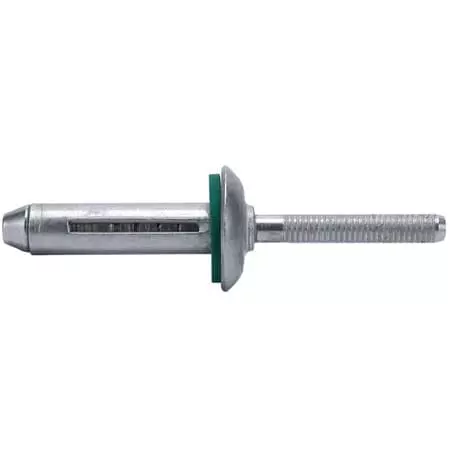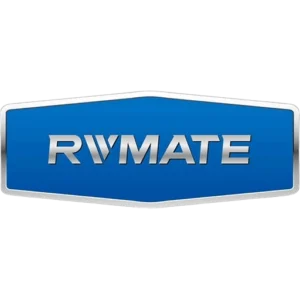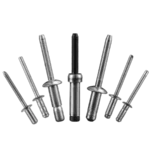Table of Contents

If you’re looking for a permanent and durable connection, nothing is more reliable than rivets. But rivets are difficult to install well by human hands. You need to choose the right pop rivet tools to install them properly. This blog will be centered around the “pop rivet tool” to introduce you to what is a pop rivet tool and what is it used for.
You will learn about the history of pop rivets, the types of pop rivet tools and their strengths, weaknesses and scenarios.
Table of Contents
Origin and History of Pop Rivets
The invention of POP rivets not only rewrote the limits of traditional double-sided riveting, but also promoted the development of automated assembly, lightweight structural connections, portable tools, and is an important foundation for fast, efficient, and reliable connection methods in modern manufacturing.
Blind rivets were invented in 1934 by George Tucker Eyelet Company in the UK, and have a history of nearly a century.The biggest innovation of POP rivets is that they only need to be operated from one side to complete the riveting process, which is very suitable for closed structures or parts with no access to the back side, and thus are also known as Blind rivets.
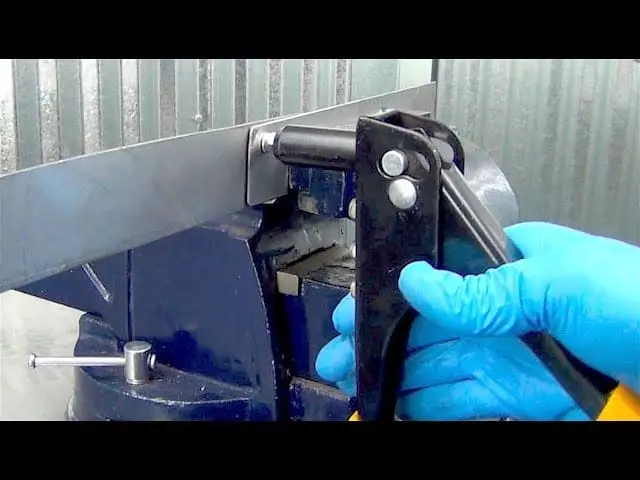
After World War II, Pop riveting technology was introduced to the automotive manufacturing, electrical assembly, metal furniture and construction industries as one of the mainstream joining solutions. Today, “POP rivet” is synonymous with blind rivets and is widely used in the following scenarios:
- Sheet metal assembly
- Appliance manufacturing
- Architectural curtain wall systems
- Structural parts for airplanes, automobiles and trains
- Plastic and composite joints
But the installation of pop rivets is not so simple and needs to be used with a special riveting tool. Lightweight hand riveting tools are perfect for simple tasks such as joining sheet metal or thin materials. If you want to simply repair a metal panel, then a hand rivet tool will do the job nicely. However, manual riveting tools are less efficient.
Of course, there are corresponding solutions for installing pop rivets in large quantities. For example, electric riveting tools and pneumatic riveting tools. Electric rivet tools are highly portable and are very much in use on outdoor construction sites. For industrial applications, pneumatic rivet guns are the best choice.
Why do Pop Rivets Need a Pop Rivet Tool?
The structural principle of the blind rivet construction that it must be installed with tools. pop rivets are composed of a rivet body and a rivet mandrel, and the following actions need to be realized with the help of tools when installing them:
- Pulling the rivet mandrel: The tool provides a linear pulling force that causes the rivet mandrel to stretch outward from the inside of the rivet body.
- Expanding the tail of the rivet body: the rivet mandrel creates a deformation zone inside the body of the nail to achieve a firm grip.
- Rivet Mandrel Breaks: The tool controls the tensile force that causes the rivet mandrel to break at a preset position, completing the riveted joint.
To install pop rivets perfectly, you need to apply some tension. And it is difficult to achieve the requirement of installing pop rivets by human power. This is the time when you need to take the help of different riveting tools to achieve a perfect connection.
| Force Source | Max Pull Force (N) | Suitable Rivet Size Range | Suitable for Structural Rivets |
| Manual Human Force (No Tool) | < 150 N | Not applicable | ❌ Not suitable |
| Manual Rivet Gun | 800 – 1,500 N | 2.4 – 4.8mm (Aluminum/Thin Steel) | ❌ Only for standard aluminum |
| Pneumatic Rivet Gun (Standard) | 2,500 – 6,000 N | 3.2 – 6.4mm (Steel/Stainless Steel) | ❌ Not enough for structural |
| Pneumatic Structural Rivet Gun | 8,000 – 15,000 N | 4.8 – 7.8mm Structural Rivets | ✅ Suitable |
| Hydraulic/Lockbolt Rivet Gun | 15,000 – 30,000+ N | Lockbolt/HuckBolt Systems | ✅ Fully suitable |
In addition to the difficulty of providing sufficient pulling force, there is no way for human labor to achieve precise control of the instantaneous breaking point and ensure consistent installation results.
Do You Have Any Questions?
Let Us Solve Your Problem
Types of Pop Rivet Tools
The suitable pop rivet tools are different for different application scenarios and usage conditions. There are mainly three basic types of rivet tools:
Manual Pop Rivet Tools
For hobbyists or professionals who use rivets for simple tools and repairs, a hand riveting tool that you can carry with you is the best choice. For example, for simple installation of furniture or DIY projects.
Working Principle
Utilizing the leverage principle of the human hand, the rivet mandrel is pulled backward by the squeeze handle, the tail of the rivet body expands and holds the workpiece in place, and the rivet mandrel breaks at the set break point to complete the riveting.
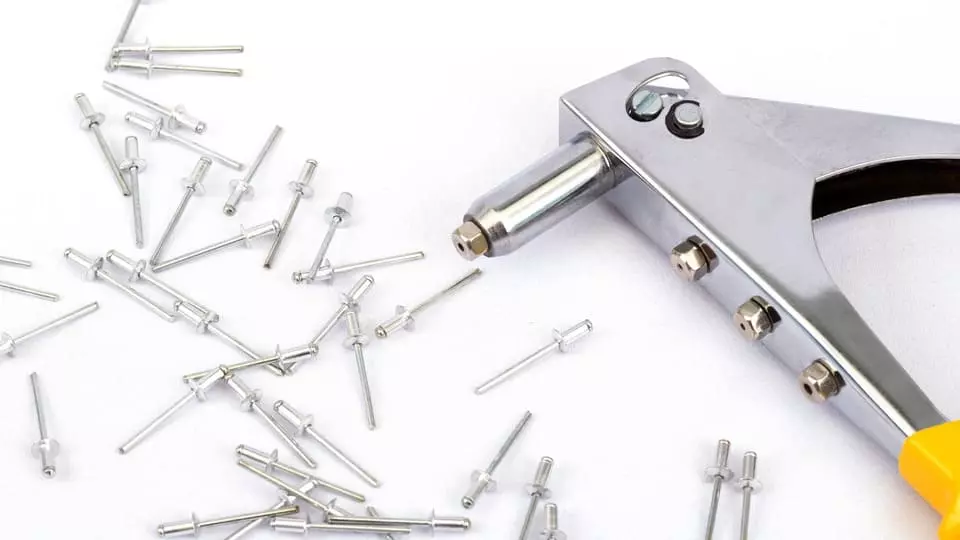
Pros of Manual pop rivet tools
- Low cost for those with limited budgets
- Simple structure, easy to maintain
- Lightweight and portable, suitable for outdoor or confined space operation
Cons of Manual pop rivet tools
- Laborious operation, not suitable for high-frequency or large-size rivets.
- Poor effect on hard material rivets or stainless steel, easy to clamp or hand fatigue
Applicable Scenarios
DIY repairs, small sheet metal work, joining of lightweight aluminum parts
Cordless Pop Rivet Tools
As battery technology becomes more sophisticated, electric riveting tools are becoming more popular. Electric rivet guns save much more effort than manual rivet guns and greatly improve installation efficiency.
Working Principle
Relying on motor-driven gear system or linear drive to provide stable tension to automatically complete the riveting process, suitable for 220V plug-in or lithium battery drive.

Pros of electric pop rivet tools
- Labor saving operation and high efficiency
- Most of them are equipped with battery portable version, suitable for airless environment.
- Quick to install, good tension consistency
Cons of Electric pop rivet tools
- Higher initial acquisition cost than manual models
- Requires periodic recharging or reliance on a power source
- Some models have limited pull force, making it difficult to handle structural rivets
Applicable Scenarios
Appliance assembly, equipment maintenance, field engineering work, electrician assembly work
Pneumatic Pop Rivet Tools
Some application scenarios, such as automotive and aircraft manufacturing, require far more rivets than can be installed manually. Pneumatic riveting tools are ideally suited for large jobs that require repetitive rivet installation. Some well-known pneumatic rivet tools manufacturers include Atlas, Gesipa, Rivmate and Stanley.
Working Principle
Compressed air is used to push the internal piston structure to pull the core, which is very efficient and suitable for long time continuous operation. Some of the high-end models are equipped with automatic core pulling and quick return function.
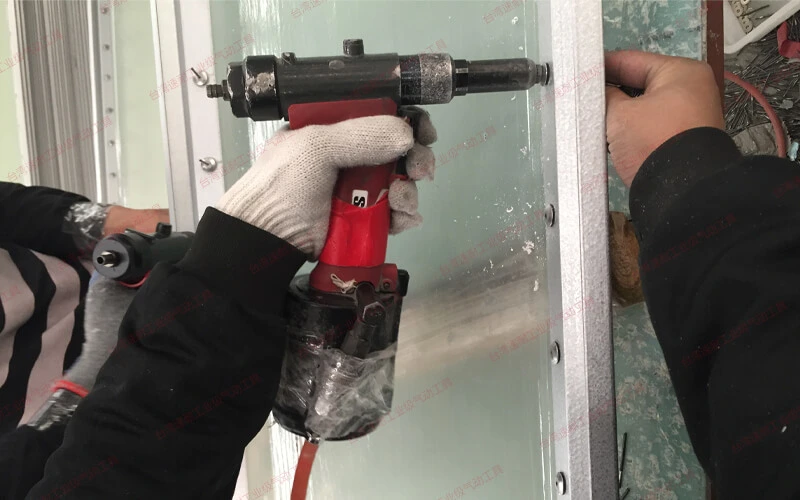
Pros of electric pop rivet tools
- Strong pulling force, suitable for steel and stainless steel rivets.
- Fast speed, suitable for assembly line continuous operation
- Professional grade construction design for durability
Cons of Electric pop rivet tools
- Requires air compressor, restricted environment
- Complex structure, requires regular maintenance and lubrication
- Higher price than manual/electric guns
Applicable Scenarios
Factory assembly line, automobile workshop, steel structure, container manufacturing
Do You Have Any Questions?
Let Us Solve Your Problem
How to Choose the Right Pop Rivet Tools for Your Project?
Choosing the right pop rivet tools depends on the type of rivets you use and the environment in which you are working. Each tool has a different pull strength and is designed for specific needs and applications.
Part 1. Clarify project parameters
Before buying pop rivet tools, you need to determine some necessary information.
Rivet type and specifications:
- Material: aluminum, steel, stainless steel, structural type?
- Diameter: Commonly used 2.4mm, 3.2mm, 4.8mm, 6.4mm, the larger the higher tension tools are required.
- Whether the structure of the rivet (such as MONOBOLT, BOM)
Workpiece material and structure:
- Is it soft plastic or thick steel plate? Is it easy to deform?
- Can it be operated on one side or does it need to be riveted with a “blind end”?

Frequency of operation:
Occasional maintenance (low frequency) vs. daily batch work (medium-high frequency) vs. factory assembly line (continuous high frequency)
Workplace
- Is there an indoor power or air source?
- Is portable, elevated, field use required?
Part 2. Recommendations for selecting the type of pop rivet tool
| Use Condition | Recommended Tool Type | Reasoning |
| DIY repairs, small assemblies, occasional use | Manual Rivet Gun | Low cost, lightweight, ideal for aluminum rivets |
| Portable use, moderate load, with power access | Electric Rivet Gun (corded/battery) | Easy operation, suitable for mid-frequency and flexible environments |
| Frequent use, steel/stainless rivets, workshop | Pneumatic Rivet Gun | High efficiency and pull force, ideal for production settings |
| Structural rivets, BOM, heavy-duty applications | Pneumatic Structural or Hydraulic Rivet Gun | Very high pull force, designed for structural fastening |
Part 3. Additional considerations
Accessories and Maintenance Support
- Is it easy to replace the clamping jaws and nozzles?
- Is there an after-sales maintenance channel? Are the accessories universal?
Tool weight and ergonomics
- Is it suitable for long time holding?
- Is there a soft grip, non-slip, anti-shock design?

Budget Range
- Manual Rivet Gun: $20-$100
- Electric Rivet Gun: $100 – $300+
- Pneumatic Standard: $150-$600
- Pneumatic structural/hydraulic: $600-$2500+.
Custom Riveting Solutions for your Business
If you have a need to buy pop rivet tools, please contact us.
Rivmate is a leading China rivet and pop rivet tools manufacturer and supplier, OEM for many world famous brands. You can get high quality tools products at very low price.
Read more:
Get Rivets Quote
You may also find these topics interesting
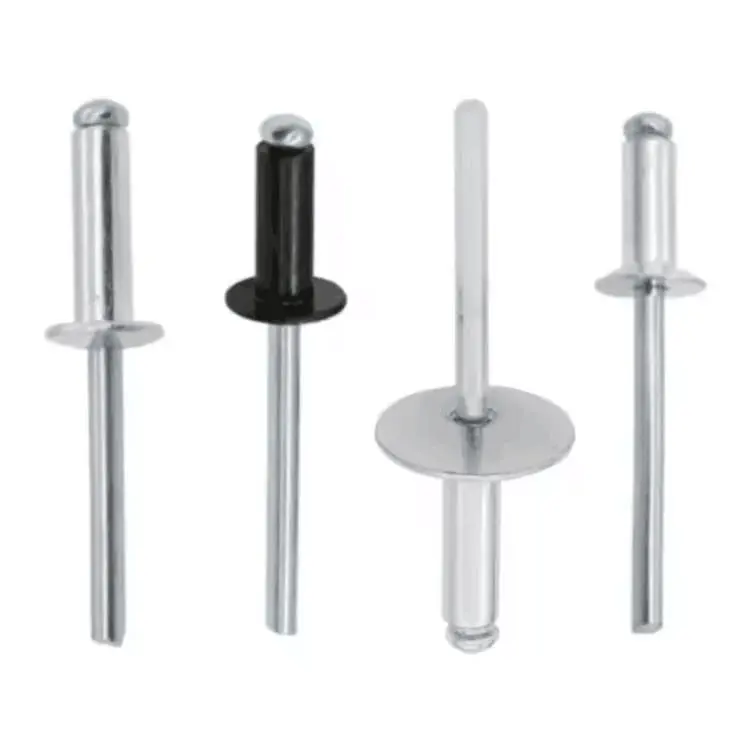
Buy Open Type Blind Rivets
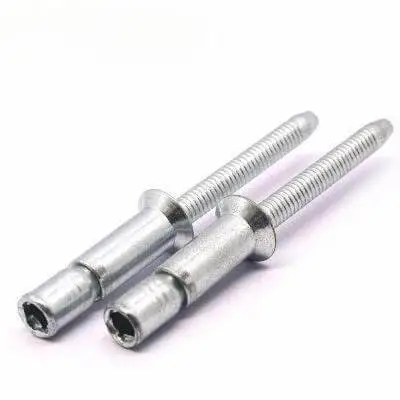
Buy Structural Blind Rivets
